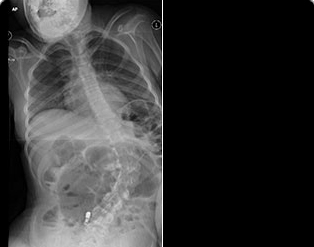Pioneering surgery schoolgirl loses her legs and learns to skateboard.
I am so grateful to Mr Marks and his team for the amazing work they did to save Rosie's life. It is just wonderful to see her see her living life to the full.
neuromuscular

A variety of neurologic and muscular conditions can lead to scoliosis. These include, Cerebral palsy, muscular dystrophies, Spinal Muscular Atrophy, secondary to a spinal cord injury and as a part of some syndromes such as Prader-Willi and Retts’ syndrome.
These patients frequently also have problems with respiratory function, seating problems and truncal balance. Conservative means is explored to improve the function and prevent the secondary problems. These include judicious use of braces, modification of wheel chairs with supports, specialized seating and sleeping systems and management of respiratory problems.
In some cases surgery is performed to fuse the spine and achieve an improved sitting balance of the trunk. Extensive pre-operative consultations with all the relevant healthcare individuals and the carers of the patient is mandatory prior to any proposed surgical intervention. Post-operative requirements are carefully considered and the availability of post-operative ITU availability is secured prior to any proposed intervention.